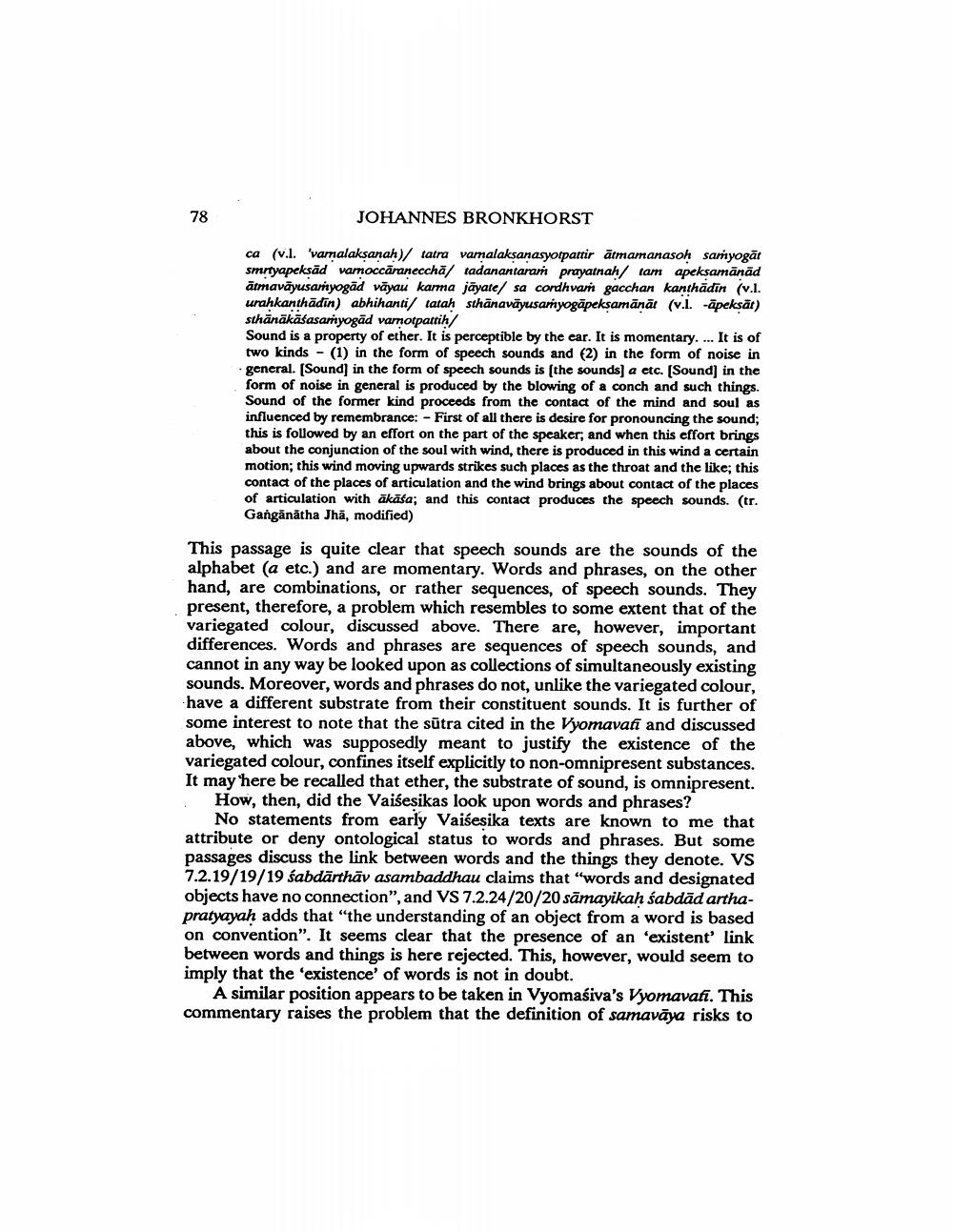________________
78
JOHANNES BRONKHORST
ca (v.l. vamalakṣaṇaḥ)/ tatra vamalakṣanasyotpattir ātmamanasoḥ samyogat smrtyapeksad vamoccaraneccha/ tadanantaram prayatnah/ tam apekṣamānād atmavayusamyogad vayau karma jāyate/ sa cordhvam gacchan kanthadin (v.l. urahkanthadin) abhihanti/ tataḥ sthanavayusaṁyogāpekṣamānāt (v.l. -āpekṣāt) sthänākāśasamyogad varnotpattih/
Sound is a property of ether. It is perceptible by the ear. It is momentary.... It is of two kinds (1) in the form of speech sounds and (2) in the form of noise in general. [Sound] in the form of speech sounds is [the sounds] a etc. [Sound] in the form of noise in general is produced by the blowing of a conch and such things. Sound of the former kind proceeds from the contact of the mind and soul as influenced by remembrance: - First of all there is desire for pronouncing the sound; this is followed by an effort on the part of the speaker; and when this effort brings about the conjunction of the soul with wind, there is produced in this wind a certain motion; this wind moving upwards strikes such places as the throat and the like; this contact of the places of articulation and the wind brings about contact of the places of articulation with ākāśa; and this contact produces the speech sounds. (tr. Ganganatha Jha, modified)
-
This passage is quite clear that speech sounds are the sounds of the alphabet (a etc.) and are momentary. Words and phrases, on the other hand, are combinations, or rather sequences, of speech sounds. They present, therefore, a problem which resembles to some extent that of the variegated colour, discussed above. There are, however, important differences. Words and phrases are sequences of speech sounds, and cannot in any way be looked upon as collections of simultaneously existing sounds. Moreover, words and phrases do not, unlike the variegated colour, have a different substrate from their constituent sounds. It is further of some interest to note that the sūtra cited in the Vyomavafi and discussed above, which was supposedly meant to justify the existence of the variegated colour, confines itself explicitly to non-omnipresent substances. It may here be recalled that ether, the substrate of sound, is omnipresent. How, then, did the Vaiśesikas look upon words and phrases?
No statements from early Vaiseṣika texts are known to me that attribute or deny ontological status to words and phrases. But some passages discuss the link between words and the things they denote. VS 7.2.19/19/19 sabdarthāv asambaddhau claims that "words and designated objects have no connection", and VS 7.2.24/20/20 samayikaḥ śabdad arthapratyayah adds that "the understanding of an object from a word is based on convention". It seems clear that the presence of an 'existent' link between words and things is here rejected. This, however, would seem to imply that the 'existence' of words is not in doubt.
A similar position appears to be taken in Vyomasiva's Vyomavati. This commentary raises the problem that the definition of samavaya risks to




